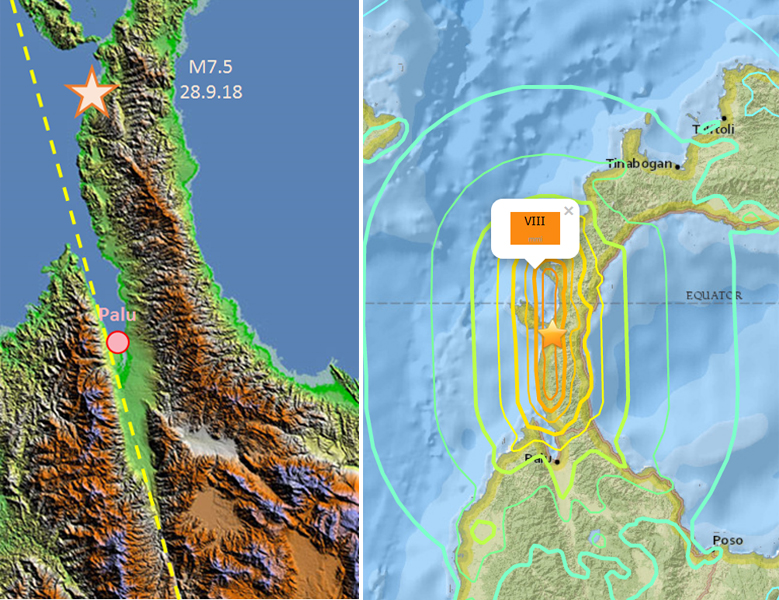2018-10-01
Earthquake and Tsunami in Sulawesi, Indonesia
On 28 September 2018, several strong earthquakes shook the island of Sulawesi in Indonesia. The strongest earthquake, with a magnitude of 7.5, triggered a tsunami and, according to knowledge to date, claimed more than a thousand lives.
The earthquake occurred about 80 kilometres north of the provincial capital Palu on the coast at a depth of about 10 km. The quake was triggered by a sudden horizontal movement of rocks along the Palu-Koro fault. The north-south running fault through the Bay of Palu is similar in type to the San Andreas fault in California. Initial analyses indicate that the rock on both sides of the fault have shifted several metres in relation to each other in the area North of the town of Palu.
Read more...Horizontal displacements such as those of this earthquake rarely trigger large tsunamis. This usually requires a vertical movement of the seabed. When a block of rock beneath the water surface rises or falls rapidly due to an earthquake, the water column above it is raised or lowered and a tsunami is triggered. The exact cause of the tsunami in the Bay of Palu is not yet known. Possible causes are the pronounced topography of the coastal area and the seabed, whereby horizontal movements could also shift large masses of water, and / or underwater landslides caused by the quake.
After the earthquake, the tsunami waves took about half an hour to reach Palu. This appears long in comparsion to the relatively short distance to the epicentre. The reason for this is the depth of the water; the greater the depth, the faster the waves spread. At a shallow water depth of 200 m, as it is likely to prevail between the epicentre and the city of Palu, the speed of propagation is about 160 km/h. This is much slower than the speed of the seismic waves, and also much slower as if the sea depth was at 4 km, typical in the deep ocean. In this deep case, the tsunami waves would have arrived at Palu in under 10 minutes. In addition, the narrow geometry of the bay north of Palu is very likely to have significantly amplified the height of the tsunami wave.
As always, the sequence of strong quakes has redistributed the tectonic stresses in the region. In the coming days, further, sometimes violent aftershocks at the Palu-Koro fault as well as at neighbouring fault lines are to be expected. Indonesia lies on the Pacific Ring of Fire, where 90 percent of all earthquakes worldwide occur.
